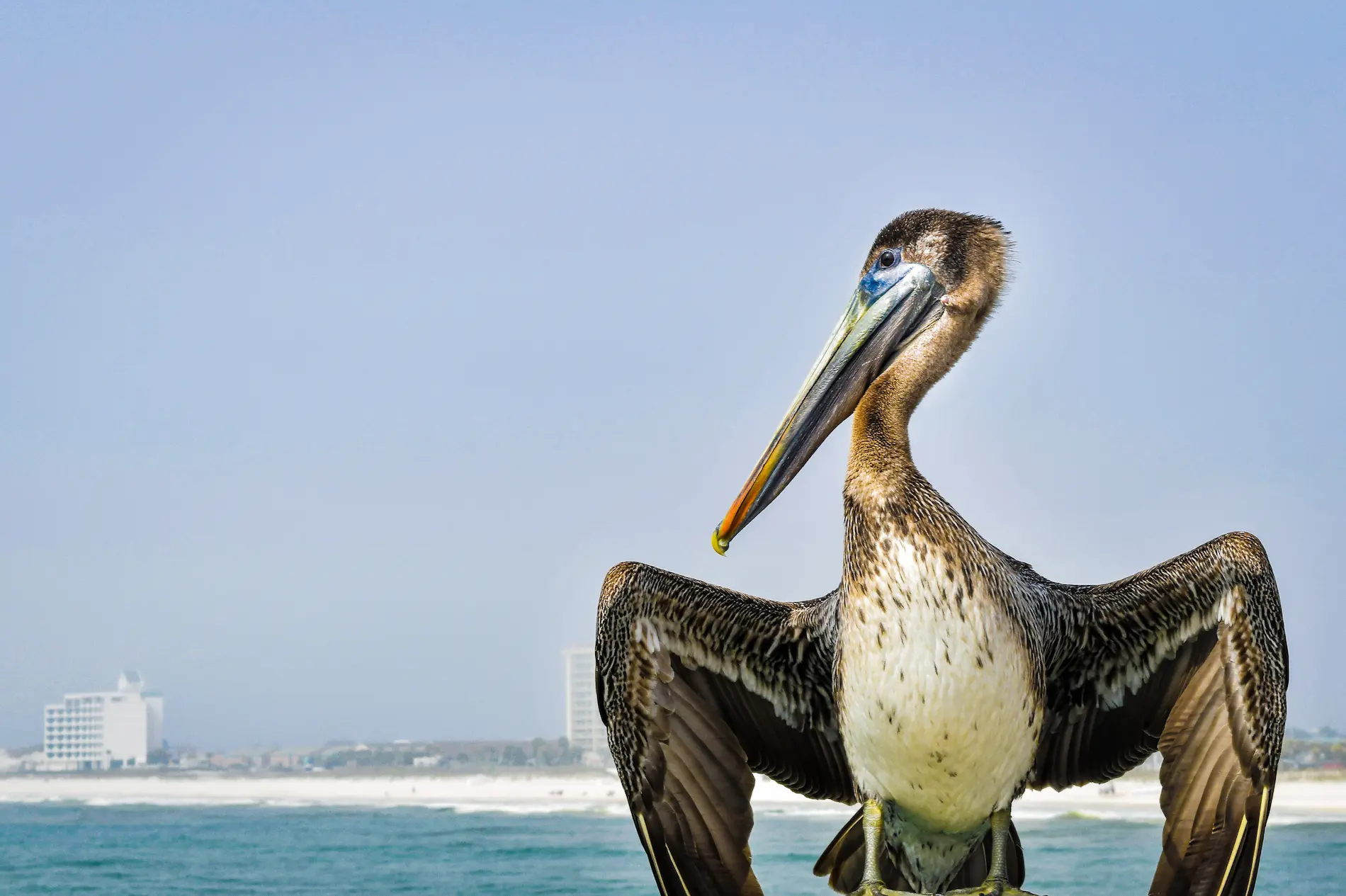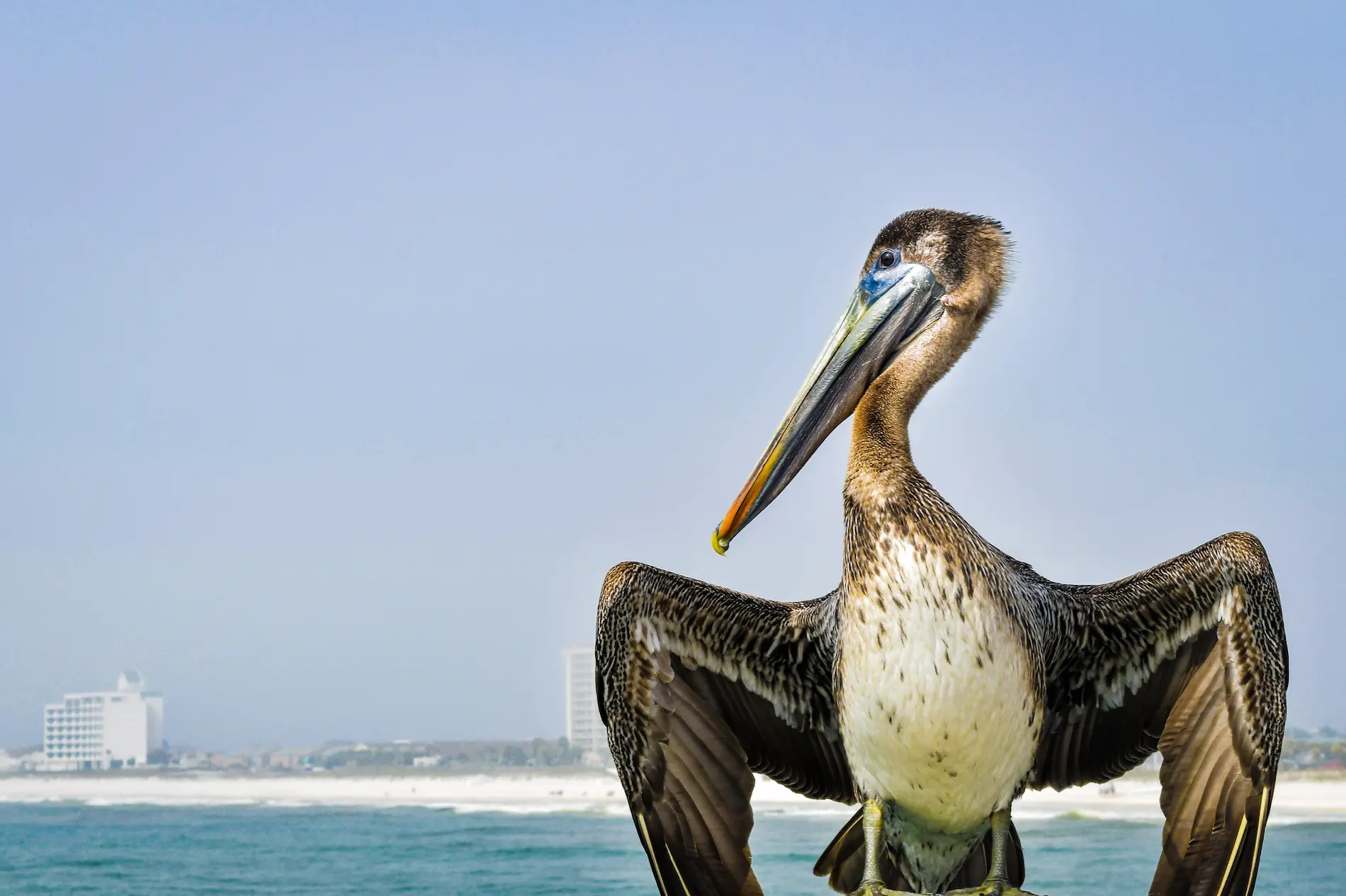
Wildlife Fact Sheet
Brown Pelican
Pelecanus occidentalis
About
Brown pelicans are recognizable for their long necks and stretchy throat pouches that they use to collect fish. To hunt, they fly high above the ocean to scope out potential prey, then plunge into the water to scoop up small fish. Brown pelicans are well-recognized regulars at beaches and fishing docks (especially near fish cleaning tables where fishers filet their catch). They have yellow heads, long white necks and gray-brown bodies.
Brown pelicans are very social and will congregate in large flocks for much of the year—the more the merrier! They can be clumsy on land, so they prefer to spend their time in the air, making it easy to spot fish to eat. When brown pelicans fly together, they can form either a “V” or straight line.

Did You Know?
Brown pelicans nest in colonies of up to 100 birds on small coastal islands where their eggs are relatively safe from predators.
Get Ocean Updates in Your Inbox
Sign up with your email and never miss an update.
Status and Conservation
At one point, pollution was a serious threat to brown pelicans’ survival. Direct exposure to pesticides like DDT greatly impacted their ability to reproduce, and they ended up on the Endangered Species List. Thankfully, the United States Environmental Protection Agency (EPA) placed a ban on the use of DDT. Since then, brown pelicans (and other birds like bald eagles and peregrine falcons, have been removed from the Endangered Species List and are thriving. Now, their primary threats are entanglement in marine debris and food source stability.